Ernemann Tower
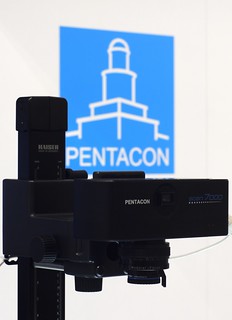
|
| Pentacon product presentation backed by large Ernemann Tower logo image by Uwe Kulick (Image rights) |
 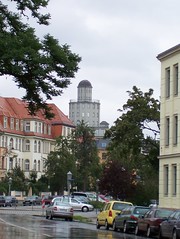
|
| The Ernemann factory's tower dominates Dresdens's suburb Striesen images by Uwe Kulick (Image rights) |

|
| image by Danipuntocom (Image rights) |
The Ernemann Tower was Germany's first significant high-riser and was part of the new Ernemann camera factory complex built by architects Emil Högg and Richard Müller in Dresden Striesen. Heinrich Ernemann's son Alexander was sent to the USA to learn from the industry there. When he came back he brought a lot of ideas to modernize the Ernemann company and how to give it modern buildings. The plans for the new buildings were made before WWI, the earliest plans for a high-riser built in Germany. Construction fell into wartime and was partially delayed to times after the war, including the tower. The latter was built from 1922-23. Including basement and the observatory on top it has 12 floors.
The older factory buildings, built in 1898, were connected by a bridge. The old building had the other mythical element of the Ernemann buildings, the mosaic "light godess", vis-a-vis to the Ernemann Tower on the other side of the Junghans Street.
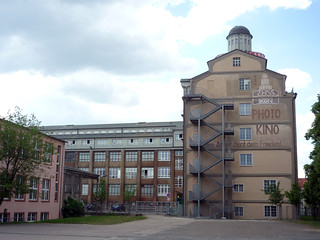 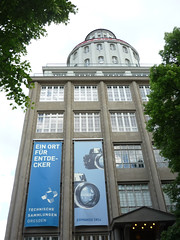 
|
| 1918/1923/1938 factory part with tower, legendary Ermanox featured on façade, and Ermanox Reflex shown inside images by Danipuntocom (Image rights) |
Since 1926 the factory belonged to Zeiss Ikon, and since 1945 to the separated East-German Zeiss-Ikon group which grew and became Pentacon, a group built of nearly all East-German photo industry companies, and was closed in 1990 by the corrupt German-Reunification "Treuhand" agency which became responsible for state-owned companies of former East-Germany. Since 1993 the newer bulding is home of Dresden's museum Technische Sammlungen (=technical collections) which comprises a fine camera department.
The Ernemann Tower's significant upper shape became the brand icon for products of Pentacon. After closure of the Pentacon group the new Pentacon GmbH took over the rights of the Exakta, Praktica and Pentacon brand names and the Pentacon Tower icon. The new Pentacon sells East-Asian OEM cameras rebadged as Exakta and Praktica, and develops professional scanner cameras elsewhere in Dresden.
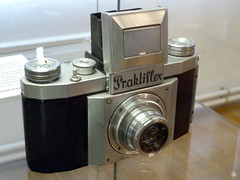 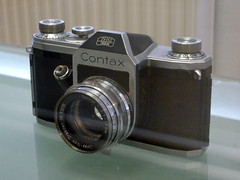 
|
| Old SLR treasures for 35mm film, made in Dresden, shown in Technische Sammlungen museum: 1939 Praktiflex, 1949 Contax S, 1936 Kine Exakta images by Danipuntocom (Image rights) |